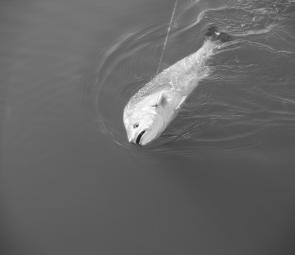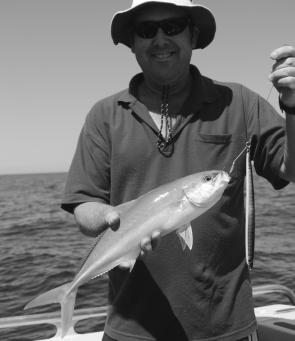North-easterly winds and afternoon storms kick in with a vengeance this month as the land heats up and the warm East Australia Current starts to run strongly offshore.
For anyone fishing the beaches or the ocean, pre-dawn starts are the only way to get a good crack at some fish before the breeze springs up by mid-morning. Thankfully, daylight saving means that doesn’t entail having to wake at a ludicrous hour.
Clear water and bright sunshine can shut down the bite quite early, especially on the shallower inshore reefs. The wider grounds become more productive as the snapper tend to move out into deeper water after they complete their spawning run and the quickening current carries the hatching eggs and fry southwards.
After a month or more of almost zero current out wide, things are likely to change quite quickly now. A lot of boats made the most of the good conditions, managing to pick up plenty of pearl perch, snapper, kings, amberjack and samson but this month the current should begin to drag a lot of trap floats under and make things more difficult.
Although the clear water can make surf fish wary on brighter days, there should be more action from whiting and dart and maybe a few small tailor to replace the hordes of hungry salmon. Dart, in particular, don’t seem to mind chewing all through the day and the same goes for the smaller whiting.
Bigger whiting are a lot more cunning, with the best action coming very early and after dark, particularly on the top of a high tide. Naturally, live beach worms are the premium bait for quality whiting although small soldier crabs are also worthy baits for big fish. In the dark when there are fewer pickers around, yabbies can also be very effective off the beach.
Look for calmer conditions at the edges of beach potholes or a gentle flow over drop-offs into gutters and fish light.
Whiting catches will improve in the Richmond River this month, too. Bloodworms become highly sought as prime river baits for whiting to a healthy 40cm. You can either dig ’em among the mangroves and get covered in mud and sandfly bites or fork out at the bait shop but nothing beats bloodworms for Richmond whiting.
The shallows of North Creek or the deeper running flats in the main river from Fishery Creek upstream to Pimlico are the main producers. Each year there are also some quality whiting in the Evans River from the bridge up to a kilometre or so above the Iron Gates. These fish move around a bit so keep prospecting and sorting through the little tackers until you find them.
Flathead also should be hitting their straps this month. They have been spread quite widely through the river but this is normally a prime period for the bigger fish downstream at the edges of the deeper holes and the bases of the extensive rock walls. Go easy on them: Don’t be a hero by killing these female fish loaded with eggs.
School jewfish should also provide plenty of entertainment and a nice feed in the lower to middle reaches. Best to follow the concentrated bait schools in deeper water and work the tide changes.
I am sickened to report that the DPI Fisheries office at Ballina has closed and inspectors no longer will be based on the Richmond River.
The office at the Government marina received a $300,000 extension and refurbishment less than three years ago and we all thought that the move was the start of good things to come for Fisheries in the region. No such luck; the bureaucratic bean-counters moved in and gradually jobs there were relocated 20km up the hill to Agriculture premises on the Alstonville Plateau
There are now no inspectors at Ballina and one inspector of the two has been moved to Maclean. Lord knows what happened to the other one but halving the compliance staff is a lousy act.
There also seems to be a stoush brewing about what is going to happen to the office in Regatta Street – prime riverside development land.
So when the Minister starts spruiking news releases about 14,000 jewfish fingerlings being released into the Richmond in late September, it leaves a bitter taste in the mouth. The fish, bred under a pilot program funded by our licence money, were supposed to be put out some weeks earlier but the water quality was so poor it was feared none would survive.
With the high probability of fish kills in the Richmond every time it rains for more than a day or two, some cynics are saying it won’t be long before there’s nothing to inspect. It’s an hour’s drive from Maclean to Ballina so there’s two hours of any inspector’s day already wasted.
So there’s now even less chance of being caught breaking the law, not that the holiday anglers seen recently with bucketfuls of 20cm bream and whiting on Airforce Beach at Evans Head would have cared. And inspectors 100km away at Maclean are never likely to know if these people had NSW licences.
Reads: 933
School jewfish should also provide plenty of entertainment and a nice feed in the lower to middle reaches.

Steve Perry of Grafton has become a convert to deep jigging after scoring this rat king after just a couple of drops.




